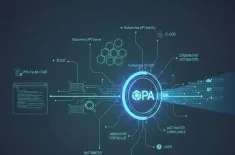Explore Confidential Computing, TEEs, and homomorphic encryption
In today's digital landscape, organizations are increasingly moving sensitive workloads and data to public clouds to benefit from scalability and cost efficiency. However, this transition introduces a fundamental security challenge: how to trust the infrastructure itself. Traditional data protection strategies have focused heavily on securing data at rest (stored on disk) through encryption and data in transit (moving across networks) using protocols like TLS/SSL. Yet, a crucial vulnerability persists—the moment data is actively being processed, or data-in-use.
This is where Confidential Computing steps in, representing a paradigm shift in cloud security. It is an innovative, hardware-based approach to Protecting sensitive data while it is actively being processed in memory, shielding it from the operating system, hypervisor, and cloud provider.
What is Confidential Computing?
Confidential computing is a cloud computing technology that isolates sensitive data and code within a secured, hardware-backed environment during execution. The goal is to minimize the "attack surface" exposed to other processes, privileged system accounts, or even the underlying cloud infrastructure provider. This fundamentally changes the trust model: users can now leverage cloud services without having to place absolute trust in the cloud operator. The technology ensures that even those with full administrative access to the server—including system administrators, kernel developers, and cloud engineers—cannot inspect the protected data or code.
The three states of data protection are now complete:
- Data At Rest: Encrypted on storage (e.g., databases, hard drives).
- Data In Transit: Encrypted over a network (e.g., TLS/SSL).
- Data In Use: Encrypted and isolated during processing (Confidential Computing).
The Role of TEEs (Trusted Execution Environments)
The bedrock of Confidential Computing is the Trusted Execution Environment (TEE). TEEs (Trusted Execution Environments) are secure areas within a main processor that guarantee code and data loaded inside them are protected with respect to confidentiality and integrity. Think of a TEE as a digital "vault" within the CPU.
Inside the TEE, a highly scrutinized, minimal amount of code—known as the Trusted Computing Base (TCB)—manages the secure environment. The TEE ensures that:
- Confidentiality: Data and code remain encrypted as long as they are inside the TEE and are only decrypted by the CPU itself for processing.
- Integrity: The code executing inside the TEE has not been maliciously tampered with.
Major technology vendors have implemented various forms of TEEs in their hardware:
- Intel SGX (Software Guard Extensions): This technology creates small, isolated areas of memory called secure enclaves within an application's address space. It offers the most granular level of isolation, protecting just a few lines of code or data structures.
- AMD SEV (Secure Encrypted Virtualization): This solution focuses on encrypting the entire memory of a virtual machine (VM). The VM's contents remain opaque to the hypervisor and host OS, making it ideal for lifting and shifting entire workloads.
Understanding Secure Enclaves
A secure enclave is the runtime environment created and enforced by a TEE, such as Intel SGX. It is a highly-protected portion of memory and CPU execution that cannot be read, written, or debugged by any external software, not even by the operating system, the hypervisor, or the BIOS.
This level of isolation is crucial for true data-in-use protection. When an application's sensitive data is loaded into the enclave, the CPU hardware automatically encrypts the memory page. It is only decrypted by the processor's memory controller just before it enters the CPU core. This continuous encryption-decryption cycle means the data is never exposed in clear text outside of the secure core. The process is transparent to the cloud provider, who only sees an encrypted blob of memory and cannot infer anything about the computation taking place.
Beyond Hardware: Homomorphic Encryption and Alternative Methods
While hardware-based TEEs (Trusted Execution Environments) are the backbone of most commercial Confidential Computing solutions today, another cryptographic technique offers an alternative, purely software-based approach to data-in-use protection: homomorphic encryption.
Homomorphic Encryption Explained
Homomorphic encryption is a remarkable form of encryption that allows computations to be performed directly on encrypted data without first decrypting it. The result of the computation remains encrypted, and when decrypted, the output is the same as if the operations had been performed on the original unencrypted data.
This concept is profoundly powerful for confidential data sharing and computation:
- Zero Trust: A party can offload sensitive computation to an untrusted server (like a public cloud) and receive the encrypted result, knowing the server never saw the data in its plain form.
- Joint Analysis: Two or more organizations can combine their sensitive, encrypted datasets for joint analysis (e.g., fraud detection or medical research) without revealing their underlying private data to each other or the processing party.
While homomorphic encryption offers unparalleled privacy guarantees—it does not require any hardware secure enclaves—it comes with significant performance overhead. The computational load of working on encrypted data is currently orders of magnitude slower than working on plaintext, making it better suited for specific, non-latency-sensitive tasks rather than general-purpose processing.

































